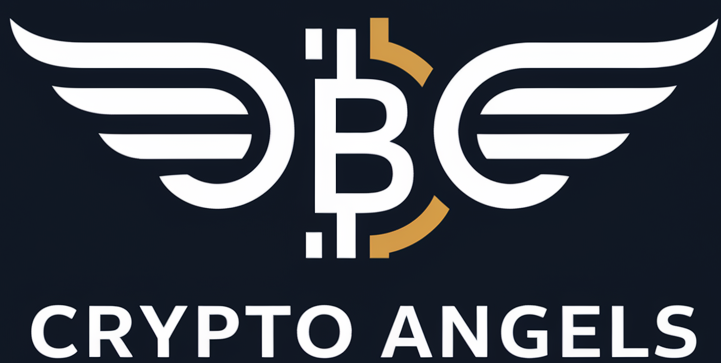What is Ravencoin (RVN)?
Ravencoin (RVN) is a decentralized, open-source cryptocurrency that focuses on enabling efficient and secure asset transfers between parties. Launched in January 2018, Ravencoin is a fork of the Bitcoin codebase, inheriting many of its features while introducing unique functionalities tailored for asset issuance and transfer.
The primary goal of Ravencoin is to provide a reliable and transparent platform for creating and trading asset-backed tokens on a peer-to-peer network. These tokens can represent a wide range of real-world and digital assets, such as precious metals, real estate, virtual goods, and more. By leveraging blockchain technology, Ravencoin ensures the integrity and immutability of asset ownership records.
Ravencoin’s Origins and Founders
Ravencoin was founded by a group of experienced blockchain enthusiasts, including Bruce Fenton, Tron Black, and Joel Weight. The project was conceived with the intention of creating a fair and accessible cryptocurrency that prioritizes decentralization and community participation.
One of the distinguishing aspects of Ravencoin’s launch was its commitment to fairness and transparency. Unlike many other cryptocurrencies, Ravencoin had no premine, no initial coin offering (ICO), and no special allocations for the founders or developers. This approach ensured a level playing field for all participants and fostered a strong sense of community ownership.
Ravencoin’s Key Features and Tokenomics
Ravencoin incorporates several key features that set it apart from other cryptocurrencies. One notable aspect is its modified issuance schedule, which aims to distribute the coin supply more evenly over time. Ravencoin has a block time of one minute, and the total supply is capped at 21 billion RVN, mirroring Bitcoin’s supply cap.
To maintain decentralization and resist the dominance of specialized mining hardware, Ravencoin employs the KAWPOW mining algorithm. This algorithm is designed to be ASIC-resistant, allowing ordinary users to participate in the mining process using their GPUs. By promoting a more distributed mining ecosystem, Ravencoin aims to ensure the long-term security and stability of its network.
Ravencoin’s Asset Issuance and Future Plans
One of the core features of Ravencoin is its ability to issue and manage asset tokens. These tokens are created on the Ravencoin blockchain, known as the Ravenchain, and can represent a wide range of assets, both real-world and virtual. By burning RVN coins, users can issue unique tokens that are tied to specific assets, enabling seamless transfer and trading.
Looking ahead, the Ravencoin community has ambitious plans for the project’s future. In addition to asset issuance, Ravencoin aims to support integrated messaging and voting systems within its protocol. These features will further enhance the utility and versatility of the platform, enabling more complex and interactive use cases.
How to Mine Ravencoin?
Mining Ravencoin is an essential part of the network’s operation, as it secures the blockchain and validates transactions. Ravencoin employs a proof-of-work (PoW) consensus mechanism, which means that miners compete to solve complex mathematical problems to add new blocks to the chain and earn block rewards.
One of the unique aspects of Ravencoin mining is its use of the KAWPOW algorithm. This algorithm is designed to be ASIC-resistant, meaning that it is less susceptible to the dominance of specialized mining hardware. By favoring GPU mining, Ravencoin aims to promote decentralization and ensure a more equitable distribution of mining rewards.
Ravencoin’s Proof-of-Work Mining
To participate in Ravencoin mining, individuals can use their personal computers equipped with graphics processing units (GPUs). The KAWPOW algorithm is optimized for GPU mining, making it accessible to a wider range of users compared to ASIC-dominated networks.
Miners contribute their computational power to the network by running mining software that solves the complex mathematical problems presented by the KAWPOW algorithm. When a miner successfully solves a block, they are rewarded with newly minted RVN coins, which serve as an incentive for their participation and help to secure the network.
Ravencoin Mining Profitability
The profitability of mining Ravencoin depends on various factors, including the miner’s hardware, electricity costs, and the current market price of RVN. Compared to mining other cryptocurrencies, Ravencoin mining can offer relatively higher returns for individuals using home computers with GPUs.
However, it is essential to note that mining profitability can fluctuate over time due to changes in network difficulty, market conditions, and hardware advancements. Prospective miners should carefully consider their investment and operational costs before engaging in Ravencoin mining.
Ravencoin’s Security Challenges
While Ravencoin has taken measures to ensure network security, it has faced challenges in the past. In 2020, a hack incident resulted in the minting of 315 million RVN coins, highlighting the importance of robust security measures and ongoing vigilance.
The Ravencoin community has actively addressed these challenges, implementing necessary upgrades and patches to strengthen the network’s resilience. As with any cryptocurrency, users should exercise caution and follow best practices for securing their RVN holdings.
How to Buy, Trade and Store Ravencoin?
Ravencoin (RVN) can be acquired through various means, including purchasing on cryptocurrency exchanges, trading with other users, or earning through mining. Once obtained, RVN can be stored in digital wallets for safekeeping and future transactions.
Exchanges to Trade Ravencoin
Ravencoin is listed on several major cryptocurrency exchanges, providing users with ample opportunities to buy, sell, and trade RVN. Some of the notable exchanges that support Ravencoin trading include:
- Binance
- Huobi Global
- OKEx
On these exchanges, users can trade RVN against various stablecoins, other cryptocurrencies, and even fiat currencies. It is essential to research and compare different exchanges in terms of fees, security, and user experience before choosing a platform to trade Ravencoin.
Ravencoin Wallets for Storing RVN
To securely store Ravencoin, users need to use a compatible wallet that supports RVN and its associated asset tokens. There are several types of wallets available, each with its own features and security measures:
| Wallet Type | Description |
|---|---|
| Desktop Wallets | Software wallets that are installed on a computer, providing full control over private keys. |
| Mobile Wallets | Wallets designed for smartphones, offering convenience and mobility. |
| Hardware Wallets | Physical devices that store private keys offline, providing the highest level of security. |
| Web Wallets | Online wallets accessible through a web browser, offering easy access but requiring trust in the service provider. |
When choosing a Ravencoin wallet, users should prioritize security, user-friendliness, and compatibility with their specific needs. It is crucial to keep private keys safe and follow best practices for wallet management to protect RVN holdings.
Trading Ravencoin on Monnos
Monnos is a Cryptobank platform that supports Ravencoin trading, offering a user-friendly interface suitable for both experienced traders and newcomers to the cryptocurrency market. With a wide range of digital assets listed, Monnos provides a convenient way to buy, sell, and trade RVN.
However, it is essential to understand that trading cryptocurrencies involves risks. Monnos emphasizes the importance of users taking responsibility for their trading strategies and being aware of the potential for financial losses. Before engaging in Ravencoin trading on Monnos or any other platform, users should educate themselves about the risks involved and make informed decisions based on their financial goals and risk tolerance.
See also:





